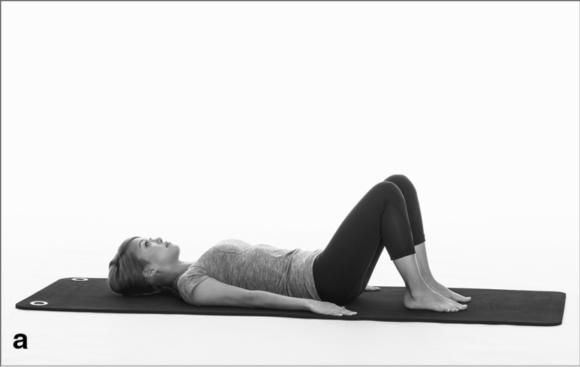Learn this exercise: pelvic curl
This is an excerpt from Pilates for Rehabilitation by Samantha Wood.
Primary Muscles Involved
Abdominals, hamstrings, and gluteus maximus
Objectives
Mobilization of the spine and pelvic region, spinal articulation, hamstring control, pelvic lumbar stabilization, and recruitment and cocontraction of the core muscles
Indications
This is usually one of the first exercises I teach to patients, as it is relatively simple yet emphasizes the correct recruitment of the core, articulation of the spine, mobilization of the pelvic region, and coordination of the breath pattern with movement. Though challenging to execute correctly, even an attempt is beneficial for patients learning the concepts of neutral spine position and core control. It is great for those with general stiffness or arthritis of the spine, a weak or inhibited core, or tightness of back extensors or hip flexors.
Precautions or Contraindications
Acute lumbar disk pathology and osteoporosis
Instructions
Lie supine with the knees bent, legs parallel approximately hip distance apart, arms relaxed at the sides with palms down, and the pelvis in a neutral position (see photo a). Inhale to prepare, exhale to set the core, and begin to curl the pelvis and spine off the mat, one vertebra at a time. Inhale and hold at the top; the pelvis should be at maximum posterior tilt and a stretch should be felt in the hip flexors (see photo b). Exhale as the spine is lowered, starting at the thoracic vertebra and rolling down one vertebra at a time until the tailbone touches the mat.


Variations
- For disk pathologies, omit the deep lumbar flexion and maintain the spine and pelvis in neutral as it is lifted.
- Place a ball between the knees to promote more adductor engagement and reach the arms overhead as the pelvis lifts to elicit more upper spine control (see photo c).

Progression
- Feet placed on a foam roll (see photo d)
- Bottom lift on reformer
- Pelvic curl with roll-up bar on Cadillac
- Pelvic curl on wunda chair

Technique Tips
- Keep the neck and shoulders relaxed.
- Maximize lumbar flexion as the spine lifts off the mat by pulling the pubic bone toward the chin (posteriorly tilting the pelvis).
- Visualize the lowering of the spine like a Slinky spring toy going down steps, deliberately placing one vertebra at a time. This will help to achieve maximum articulation and spinal mobility.
SHOP

Get the latest insights with regular newsletters, plus periodic product information and special insider offers.
JOIN NOW


